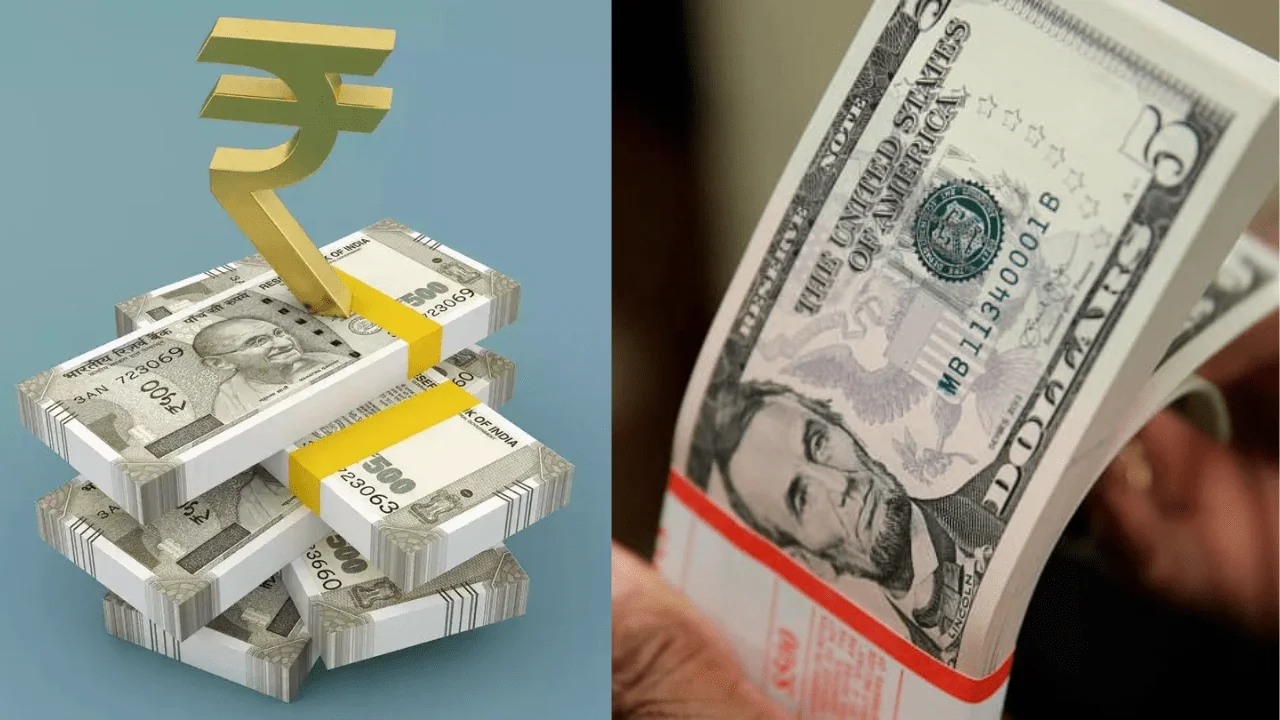Rupee Plummets to Historic Low of 84.41 Against US Dollar
The Indian Rupee’s recent depreciation to a record low of 84.41 against the US Dollar has triggered concern across financial markets, businesses, and households alike. This significant dip in the rupee’s value affects India’s economy on multiple fronts, influencing everything from consumer prices to trade balances and foreign investment. As India grapples with this currency devaluation, it’s essential to understand the driving forces, the economic implications, and what policymakers are doing to stabilize the situation.
1. The Context: Why the Rupee is Falling
The Indian rupee’s value has been falling consistently over the past few years, but recent global developments have accelerated its decline. As the rupee hit the unprecedented low of 84.41, it became clear that both external and internal factors are contributing to the pressure on India’s currency.
2. Key Global Factors Behind the Decline of the Rupee
a. Strengthening of the US Dollar
One of the primary drivers behind the rupee’s decline is the rapid strengthening of the US Dollar. The US Federal Reserve has been hiking interest rates in a bid to control inflation in the US economy, a move that has made dollar-denominated assets more attractive to investors. As interest rates in the US rise, foreign investors shift capital to the US to take advantage of higher yields, which in turn drives up demand for the dollar.
b. US Dollar Index Surge
The US Dollar Index (DXY), which measures the dollar against a basket of major global currencies, has been on the rise, pushing down the value of emerging market currencies like the rupee. A strong dollar means that countries around the world, including India, face depreciating currencies as the dollar’s value increases in relative terms. The index’s growth has intensified amid global geopolitical tensions and uncertain economic prospects, prompting investors to turn to the dollar as a safe-haven currency.
c. Rising Crude Oil Prices
India relies heavily on oil imports to meet its energy demands. When global crude oil prices increase, India’s import bill also rises, thereby increasing the demand for dollars to pay for these imports. In 2024, ongoing geopolitical conflicts, particularly in oil-producing regions, have caused oil prices to fluctuate and remain elevated. This has had a direct impact on India’s current account deficit, leading to additional downward pressure on the rupee.
d. Geopolitical Tensions and Economic Uncertainty
The rupee’s recent performance is also reflective of heightened global uncertainty. Geopolitical tensions, including conflicts in Eastern Europe and the Middle East, have created volatility in global markets, affecting investor sentiment. As investors become more risk-averse, they tend to move their investments from emerging markets to safer assets like the US Dollar, which contributes to further weakening of the rupee.

3. Domestic Factors Contributing to the Rupee’s Depreciation
While global factors are major contributors, several domestic elements have also been impacting the rupee’s value.
a. Widening Trade Deficit
India’s trade deficit has been widening in recent months, with imports significantly outpacing exports. This imbalance means that the demand for dollars to pay for imports exceeds the inflow of dollars from exports, creating pressure on the rupee. Major imports, such as crude oil and electronics, have been increasing, while export growth has been limited. The result is a greater demand for foreign currency, which weakens the rupee.
b. Weak Foreign Investment Inflows
Foreign Direct Investment (FDI) and Foreign Portfolio Investment (FPI) play critical roles in supporting the rupee. However, global economic concerns and a stronger US Dollar have led to weaker foreign inflows into India. This lack of capital inflow puts additional strain on the rupee, as it leads to a scarcity of foreign currency within the Indian economy.
c. High Domestic Inflation
India has been grappling with inflationary pressures, especially in the food and energy sectors. Inflation diminishes the purchasing power of the currency, making it weaker. High inflation can deter foreign investment and dampen domestic demand, further straining the rupee. As the RBI balances efforts to curb inflation with the need to support economic growth, the rupee’s volatility has increased.

4. Implications of a Weakening Rupee
The decline of the rupee to a historic low brings both challenges and limited opportunities to the Indian economy.
a. Higher Import Costs and Inflationary Pressures
A weaker rupee makes imports more expensive, especially essential goods like crude oil, machinery, and electronics. Since India imports a significant amount of these goods, higher import costs contribute to overall inflation within the economy. For households, this could mean higher prices for fuel, transport, food, and other essential items, squeezing disposable income and impacting consumption.
b. Impact on Trade Balance and Export Competitiveness
While a weaker rupee can make Indian goods cheaper for foreign buyers, boosting export competitiveness, the overall impact on India’s trade balance may be minimal. This is because India’s export sector is relatively limited compared to its import requirements, especially for oil. Furthermore, external demand for Indian goods may not increase proportionally due to global economic slowdown concerns, limiting the benefits of a depreciated currency.
c. Increased Burden of External Debt
A depreciating rupee raises the cost of servicing India’s external debt. As the rupee falls, India needs more rupees to pay off dollar-denominated loans, increasing the debt burden. This is a major concern for Indian companies with large foreign currency loans, as it affects their profitability and could lead to higher interest payments.
d. Effects on Foreign Education and Travel
For Indians studying or traveling abroad, a weaker rupee means that the cost of education, accommodation, and general expenses in foreign countries becomes more expensive. The rupee’s decline has thus impacted many students’ financial planning and family budgets, with increased currency exchange costs.

5. The Role of the Reserve Bank of India (RBI)
The Reserve Bank of India (RBI) plays a critical role in managing the rupee’s stability. It intervenes in foreign exchange markets by selling dollars from its foreign exchange reserves to curb excessive rupee depreciation. However, the RBI’s intervention has its limits, as depleting forex reserves could weaken India’s economic resilience.
In addition to currency intervention, the RBI can also raise interest rates to make Indian assets more attractive to foreign investors, which could support the rupee. However, this move would have implications for India’s economic growth as higher interest rates could dampen borrowing and investment within the country.
6. Policy Options and Future Outlook
Addressing the rupee’s depreciation requires a multifaceted approach, balancing immediate interventions with long-term reforms.
a. Promoting Exports and Reducing Import Dependence
Boosting India’s exports, especially in sectors like manufacturing, technology, and pharmaceuticals, could help counterbalance the impact of imports on the rupee. At the same time, encouraging domestic production for essential goods, especially in the energy sector, could reduce India’s dependence on imports and help stabilize the rupee.
b. Attracting Foreign Investment
India can mitigate the effects of a weakening rupee by attracting more FDI and FPI inflows. Policies to improve the ease of doing business, tax incentives for foreign investors, and fostering a stable investment environment could support the rupee by increasing foreign exchange reserves.
c. Managing Fiscal and Monetary Policies
Maintaining a balanced fiscal policy that minimizes excessive borrowing is crucial for currency stability. Moreover, the RBI’s monetary policies will play a key role in managing inflation and stabilizing the rupee without stifling economic growth.

7. Conclusion
The rupee’s fall to 84.41 against the US Dollar reflects both global economic trends and domestic challenges. While the depreciation has its adverse effects, it also highlights areas for policy improvement and economic reforms that could strengthen India’s economy in the long run. For now, India’s policymakers, including the RBI, are likely to focus on managing inflation and supporting economic growth, while exploring ways to attract investment and boost exports.
The trajectory of the rupee will depend on the interplay of these policies and global economic developments. As the rupee faces ongoing pressure, the need for a balanced, forward-looking approach becomes all the more critical to safeguard India’s economic stability and growth in the years to come.










